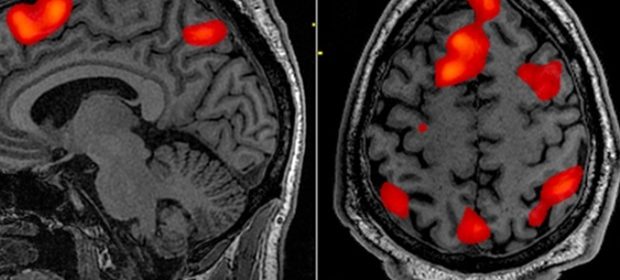Researchers receive $3.4 million NIH grant to assess soccer's tradeoffs with respect to brain health

More than 25 million Americans play soccer, the world's most popular sport. Soccer significantly benefits brain health by boosting aerobic capacity and oxygen and blood flow to the brain, but it also has a downside: Recent studies show that highly repetitive heading of the ball is associated with structural brain changes and worse cognitive performance similar to brain damage caused by concussion.
Researchers at Albert Einstein College of Medicine have now received a five-year, $3.4 million grant from the National Institutes of Health (NIH) to assess the tradeoffs between soccer's aerobic brain benefits and the adverse effects from heading in a study employing neuroimaging, exercise testing, and cognitive testing.
"Soccer players and their parents have been rightly warned about the potential risks of heading in soccer, but it leads to mixed messages about the wisdom of playing the sport," said Michael Lipton, M.D., Ph.D., professor of radiology and of psychiatry and behavioral sciences, associate professor in the Dominick P. Purpura Department of Neuroscience, and associate director of Gruss Magnetic Resonance Research Center at Einstein and director of MRI services at Montefiore Health System. "This grant will allow us to determine soccer's tradeoffs with respect to brain health so that people can make informed decisions and we can establish evidence-based guidelines for heading."
Dr. Lipton's previous studies have found that adult amateur soccer players who head more than a thousand times in a year exhibit worse cognitive performance and structural brain changes not found in those who head much less or not at all. Additional findings by Dr. Lipton have shown that heading is worse for women's brains than for men's. "What we want to determine in our new study is whether soccer's benefits mitigate the adverse effects of heading for cognitive performance-;and, if so, whether a threshold level of aerobic activity is required to confer protection," he said.
Genetics & Genomics eBook

Compilation of the top interviews, articles, and news in the last year.
Download a copy today
The new study will enroll 280 young men and women-;a group including 140 soccer players with high (70) and low (70) exposure to heading, 70 non-collision athletes, and 70 non-athletes. At the start of the study and again two years later, participants will be tested to measure their aerobic capacity, undergo MRI brain scans to determine their white-matter structure, and will complete detailed surveys and testing to assess their cognitive status. Based on their results, Dr. Lipton and his colleagues will determine whether soccer's aerobic benefits counterbalance the damage sustained from heading. The researchers will also investigate whether genetic factors and gender may explain individual differences in the results.
We hope that our findings can help people decide whether to engage in soccer heading or in other contact sports, such as football, which have been linked to brain injury."
Dr. Michael Lipton, Director of MRI services at Montefiore Health System
The grant, titled "Heading and Soccer: understanding cognitive risks, benefits, and the potential mediating role of white matter," was provided by the National Institute of Neurological Disorders and Stroke, part of the NIH. (R01NS123374)
Albert Einstein College of Medicine
Posted in: Medical Science News | Medical Research News | Healthcare News
Tags: Aging, AIDS, Blood, Brain, Cancer, Concussion, Diabetes, Education, Exercise, Genetic, Health Disparities, Hospital, Liver, Liver Disease, Medicine, Neuroimaging, Neuroscience, Oxygen, pH, Psychiatry, Radiology, Research, Stroke, students
Source: Read Full Article